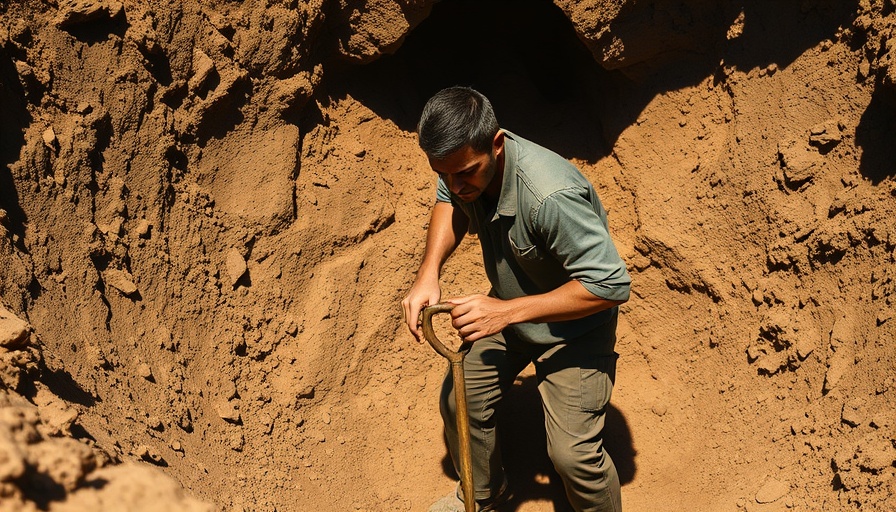
The Dangers of Mercury Use in Gold Mining
In the village of Bantaku, located deep in southeast Senegal, thousands of hopeful miners are risking their lives for the prospect of gold. Each dig site is a labor of love and urgency, often no more than 10 to 15 meters deep, yet the rewards are fewer than one would expect. The rise in gold prices due to geopolitical tensions is hardly shared by these miners, who contend with devastating health and environmental risks that often outweigh their modest gains. The prevalent use of mercury in gold extraction poses serious health hazards not only to the miners but also to the surrounding ecosystem.
In 'Small-scale gold miners in Senegal use mercury despite health risks', the discussion delves into the urgent health and environmental crises faced by miners, prompting further investigation and solutions.
A Cycle of Contamination and Health Risks
Employing mercury to bind small particles of gold has unfortunately become a standard practice among gold miners. This hazardous chemical, known for its toxic characteristics, severely poisons the soil and air. Reports indicate that mercury exposure can lead to severe health complications such as lung diseases and developmental issues in newborns. Furthermore, as a direct consequence of mercury use, Bantaku's agriculture suffers, rendering the once fertile land unsuitable for crop production. One local miner expressed his sorrow as he observed the land's deterioration, sharing that "the soil here is contaminated, so we can't grow crops"—a stark portrayal of the human and environmental toll.
The Government's Struggle with Mercury Regulations
Despite international awareness of mercury's dangers and various global efforts to ban its use, the Senegalese government's attempts to eliminate mercury from gold mining practices have been largely unsuccessful. The miners, facing a lack of viable alternatives for gold extraction, remain reluctant to abandon its use. This situation presents a paradox: government policies designed to safeguard public health and ecological integrity are futile if they do not adequately address the economic realities of the miners.
Future Innovations in Sustainable Mining
The pressing need to devise alternatives to mercury use in gold extraction is clear. Innovative solutions, such as the development of safer chemical substitutes or more efficient extraction techniques, could improve the health and safety of miners while simultaneously protecting Senegal's fragile environment. Moreover, partnerships between governments, non-profits, and private sectors may foster sustainable mining practices that prioritize human welfare alongside economic needs. Some advocacy groups are already promoting safer methods of gold extraction, but the path to widespread adoption remains complex.
Community Voices and the Need for Change
The implications of continued mercury use extend beyond health risks; they underscore the urgent need for community engagement and activism to create meaningful change. Listening to the voices of the miners can lend invaluable insight into the systemic issues they face and inform policymakers about what a truly effective transition might look like. Initiatives aimed at providing education about safer practices and greater access to alternative technologies will likely lead to long-term benefits for the communities involved.
A Call for Global Awareness and Action
The circumstances in Bantaku, as showcased in the video titled "Small-scale gold miners in Senegal use mercury despite health risks," highlight not only a local dilemma but a global health crisis that demands immediate action. Integrating community perspectives with scientific research can pave the way for a safer approach to gold mining in Senegal and across the African continent. As news from Africa continues to spread about the dangers of mercury use, stakeholders at all levels should recognize their roles in safeguarding public health and environmental integrity.
 Add Row
Add Row  Add
Add 




Write A Comment